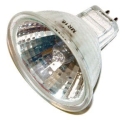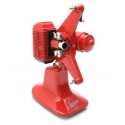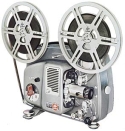8mm film is especially important in the history of home movies and newsreel photography. Before its invention, most home movies were filmed in the far more expensive 16mm format used professionally for many commercial movies. However, there were two significant problems with 16mm film. First, there was its price, which was prohibitively expensive for the middle-class who might most wish to use is. Second, there was the weight. 16mm reels are very bulky, and not very well suited to being used for home film or for more dangerous news footage.
Fortunately, in 1932, 8mm film was invented. At first, 8mm film was very similar to 16mm film, which cut down on production costs. Rather than include film that was actually 8mm wide, what was produced was a film that would film 8mm width pictures on one side of a 16mm film. Once done, the film would be rethreaded in the other direction, and the other side of the film would be filmed on. As a result, one could get four times as many images on the same size of film. When finished, the negative would be cut in half and would then be projected onto an 8mm-wide print that would be used in 8mm projectors.
There were some downsides to this, however. First, though smaller than 16mm film reels, 8mm film reels were still rather bulky. Second, having to stop halfway through in order to rethread the film was a hassle, especially for news photographers, who might miss something during the rethreading process. Nonetheless, 8mm film stayed the industry standard for about thirty years, and if you see “8mm film” from the 1930s until the early 1960s, it is likely this kind of 8mm film.
In 1965, a new form of 8mm film was developed, especially for home movie use. This was called “Super 8” film, and it is incompatible with 8mm projectors and cameras. Rather than being a 16mm film used twice over, Super 8 film is a true 8mm film. It had nothing but advantages over the old 8mm films. First, it did not need to be rethreaded, removing the greatest hassle of the old 8mm. Second, it did not need to be threaded at all. Super 8 film was released using cartridges that could be easily snapped into a film projector, even by amateurs. Finally, Super 8 film was simply higher quality than 8mm film. The image was sharper and, ultimately, included sound as well. As a result, Super 8 film became the standard home movie film from the late 1960s until the rise of video cassette technology in the 1980s.
8mm film was the standard form of inexpensive film from the early 1930s until the 1980s. It had two stages in its development, beginning as a re-used 16mm film stock and ultimately turning into one of the most popular home movie media of all time.



